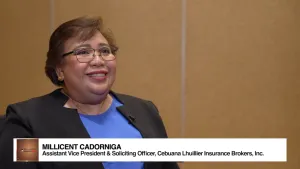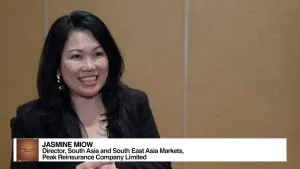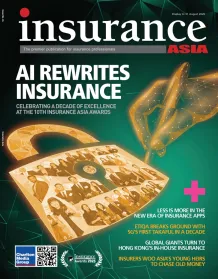Making bancassurance partnerships work: It takes two to tango
By James TanThere are 10 types of innovation that can insurers and banks can do.
The early 2000s marked a significant milestone for bancassurance in Asia Pacific. Following the high-profile launch of a partnership between a global insurer and a regionally headquartered bank, the region was swept up by a tsunami of interest in bancassurance tie-ups seeking to offer customers banking and insurance products under a single financial institution.
Fast forward to today, bancassurance partnerships are the norm rather than the exception, with many insurers willing to fork out huge sums for exclusive access to a bank’s extensive customer base and distribution network. The sobering reality, however, is that not all partnerships perform as anticipated.
In this article, we have distilled the observations gleaned from our extensive experience supporting insurers and banks on their bancassurance partnerships in Asia Pacific and beyond to elucidate the key execution and relationship issues on this journey and provide some recommendations on the way forward.
Overall, we have observed a number of key challenges – and thereby, opportunities for innovation – that we will discuss in the sections below. These opportunities can broadly be categorised into 10 types of innovation, in no particular order of importance:
CONFIGURATION
1. Profit model: The way in which profit is generated
2. Network: Connections with others to create value
3. Structure: Alignment of talent and assets
4. Process: Signature methods for delivering work
OFFERING
5. Product performance: Distinguishing features and functionalities
6. Product system: Complementary products and services
EXPERIENCE
7. Service: Support and enhancements that surround offerings
8. Channel: How offerings are delivered to customers
9. Brand: Representation of offerings and business
10. Customer engagement: Distinctive interactions
Offering
One area of significant divergence lies in differing assessments of the suitability of an insurance offering for bancassurance distribution. While banks tend to be more segment-centric in their orientation and prefer transactional offerings that can be sold in large volumes, insurers are relatively more product-focused and emphasise long-term protection as key to their profitability and return on investment.
A common point of contention, for example, tends to arise in the context of savings or participating product offerings at bank branches – otherwise known as “101 products” – that tend to comprise very little insurance coverage, and are typically positioned as deposit replacement products with features such as minimum guaranteed returns and potential upside bonuses.
It is worth noting, however, that there has been a rise in bank sales of regular premium protection products in recent years. These longer-term products are delivered through their distribution networks with segment-specific and channel-specific propositions, and offer banks the benefit of annuity income through trailer commission.
To better capitalise on this opportunity, insurers should consider collaborating with their banking partners on the development of joint offering or proposition roadmaps. These roadmaps could be calibrated to specific segment and channel needs – for example, by establishing infrastructural elements, such as payment and policy issuance processes – for a more seamless customer experience (CX).
Experience
It is widely acknowledged that banks have an edge over insurers in the realm of digital capabilities. As a result of this digital gap, few bancassurance partnerships have been successful at delivering a seamless CX, let alone the seamless execution of end-to-end transactions. To make it work, both sides must commit to putting customers at the centre, and invest in the development of capabilities and resources fluent in both sides of the banking and insurance equation.
In terms of experience, one key challenge – particularly for the life insurance segment – is the ability to design a seamless purchasing platform that is not only compliant with regulatory requirements, but also integrates the bank’s platform with the insurer’s underwriting engine for the direct issuance of life policies. Similar models have already been implemented in the general insurance segment, although this has proven to be more challenging for life insurance products due to underwriting requirements.
From a customer perspective, however, the majority of products are already connected to user interfaces (UI) via application programming interfaces (APIs), with the result that they now have ready access to product features, benefits, and other application requirements. Looking ahead, we believe that an integration of an insurer’s middle-office and back-office functions with the bank’s front-office may soon become a reality, especially in the context of exclusive bancassurance partnerships, and this is expected to go a long way in increasing insurance penetration rates within the bank’s customer base.
As an immediate next step, we recommend that banks and insurers conduct a proper joint review of their CX and collaborate on the development of a platform that is unique to their partnership. This would not only help to better differentiate their partnership, but also generate greater efficiencies in the delivery of insurance offerings to bank customers.
Configuration
Managing the end-to-end customer sales journey from lead management to application submission is more art than science. Every bank has its own process – shaped by its specific governance requirements, which are in turn influenced by its idiosyncratic risk appetites – and this could vary even within the same bank at a country or regional level.
Such variation poses a fundamental challenge for insurers engaging in bancassurance partnerships, as there is never a one-size-fits-all solution. It is also for this reason that we have witnessed in our own experience an abundance of ‘hand-offs’ in bancassurance sales processes that invariably result in lead leakages and low conversion rates – and with these, higher operating costs, and loss of revenue opportunities.
On average, a branch sale has about a 2% conversion rate from the initial generation of customer leads to lead qualification and policy issuance. Through a mapping exercise that we conducted, we noticed that hand-offs – such as from branch counter staff to customer service, and then to insurance specialist within the branch environment – effectively “killed” leads and dampened customers’ enthusiasm for the purchase.
One potential solution to keep a customer engaged and informed throughout the process is to develop a common platform. This could help to minimise the number of hand-offs and enable leads to be more effectively harnessed; however, pursuing this option will first require a thorough, hands-on review of the end-to-end process to identify critical gaps and uncover meaningful insights on the customer experience and relationship managers’ selling pain points.
Whilst performance issues are complex, relationship issues may be even trickier to navigate. Fundamentally, trust should be the cornerstone of any partnership, and both parties must play their part in forging and maintaining the relationship.
Notwithstanding differing incentives and motivations – an insurer is driven by the potential of returns given the considerable monetary investment involved, while a bank is more concerned about the opportunity cost of exclusivity, as well as fee income and customer penetration rates – both partners must find a way to coalesce around a shared, central focus on the customer.
After all, both the insurer and the bank are jointly responsible for the sale, revenue, and associated risks of any given insurance product sold through a bank. Both stand to gain when a customer maintains a policy; conversely, both stand to lose when a customer surrenders a policy.
Given the prominent level of investment in bancassurance partnerships, insurers are understandably under pressure to deliver returns. Nevertheless, it may be worthwhile taking a step back to consider whether their banking partners are sufficiently equipped with the tools they need to secure the sale. Questions to ask include: Are our capabilities and technology platforms on par or compatible with our banking partner’s? Does our approach align with their processes, priorities, and focus segments?
These are complex considerations, especially for life insurance products whose inherent long-term timelines contrast significantly with the transactional nature of most financial products sold at a bank. A review of existing systems, taking into account this difference in timeline orientations, relevant regulatory requirements, and underwriting requirements – will therefore be needed to assess whether existing systems are fit-for-purpose and identify areas where the insurer and its banking partner can better align their capabilities with each other.
Moving forward in lockstep
Having established that it is in both the insurer and bank’s interest to make their partnership work, the question remains as to how they can move forward in lockstep. To this end, we propose that bancassurance partnerships commit to undertaking periodic, objective third-party reviews.
In this regard, having a regular cadence is key, as it would enable issues to be addressed as soon as they are identified. Furthermore, keeping in mind that there are no one-size-fits-all solutions, it would also allow both parties to extract lessons from the latest best practices or common pitfalls as they emerge.
And as is the case with all partnerships, it always takes two to tango. For a bancassurance partnership to succeed, insurers must secure a shared, long-term commitment from their banking partners beyond the initial investment – not least with the mutual agreement to undertake continual, ongoing efforts that will enable them to grow together in lockstep throughout the entire lifetime of their partnership.




















 Advertise
Advertise






